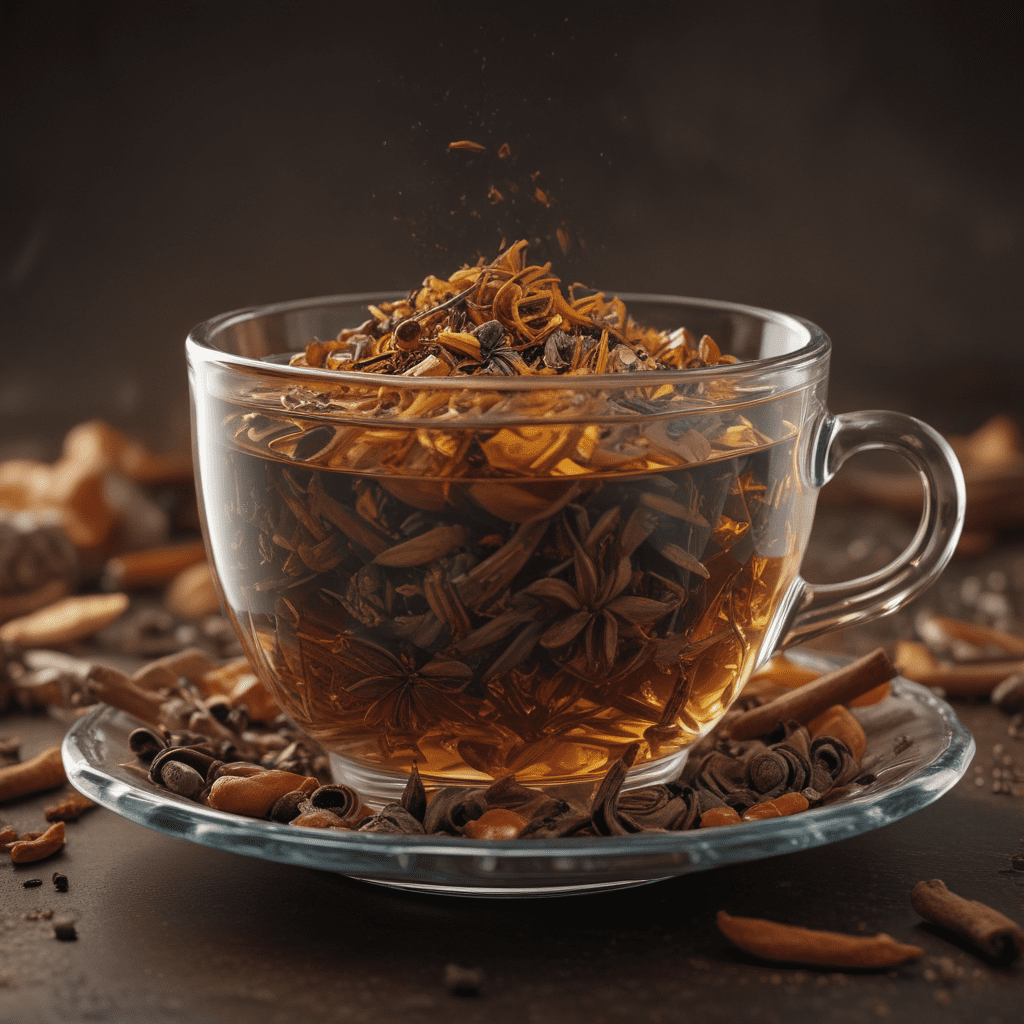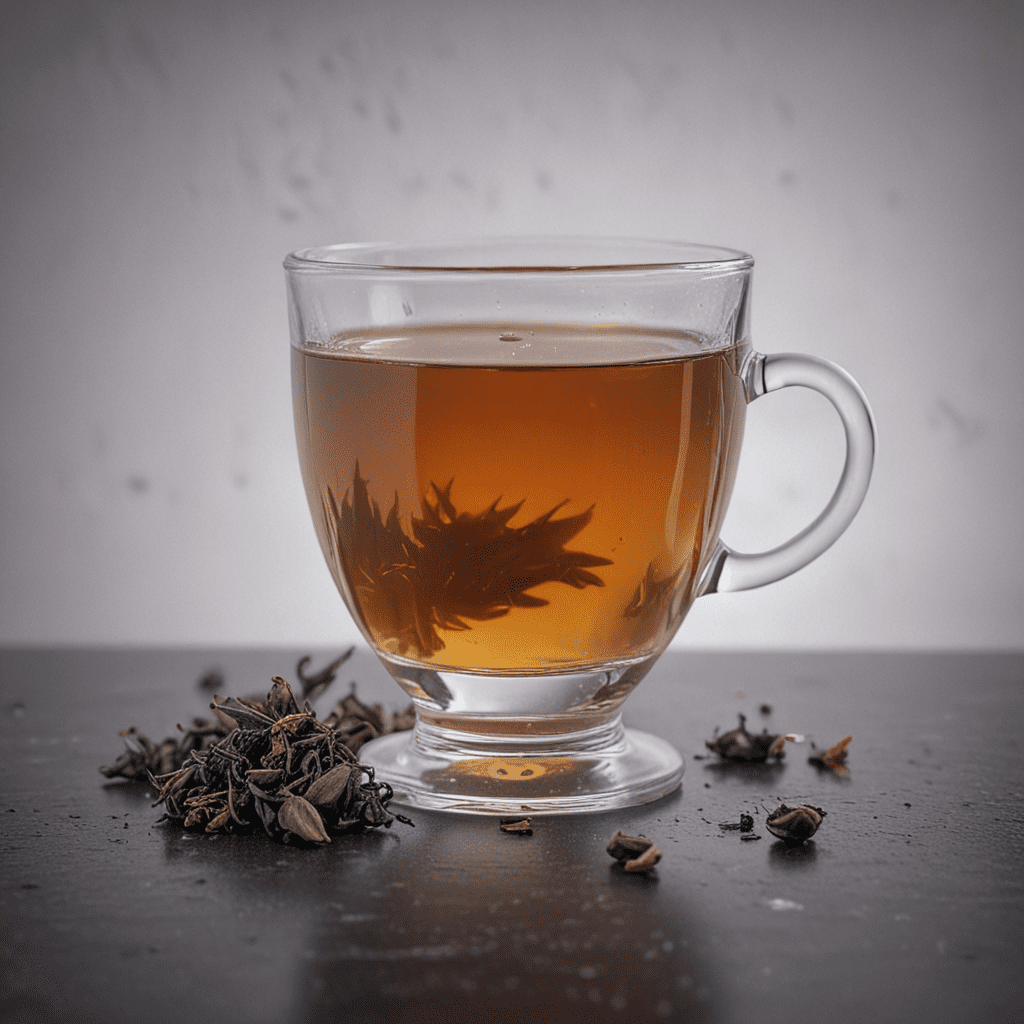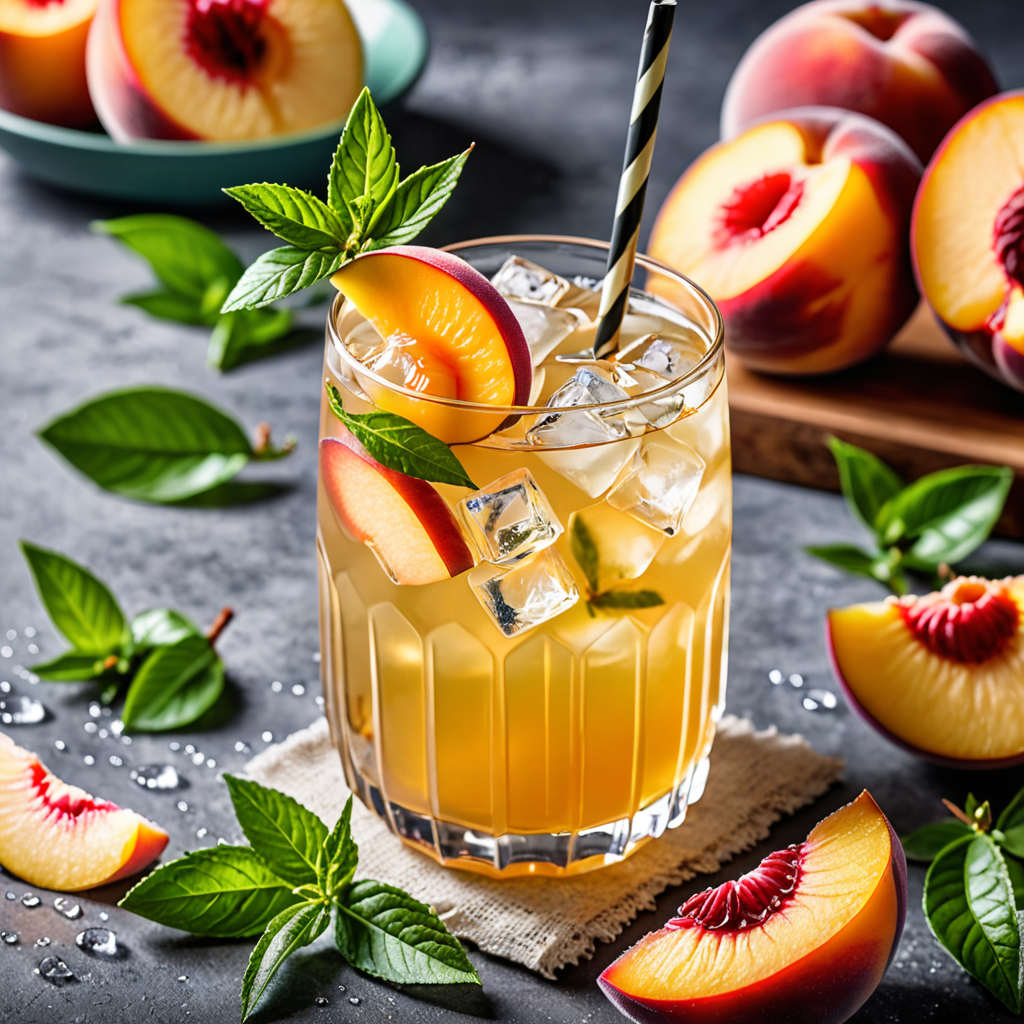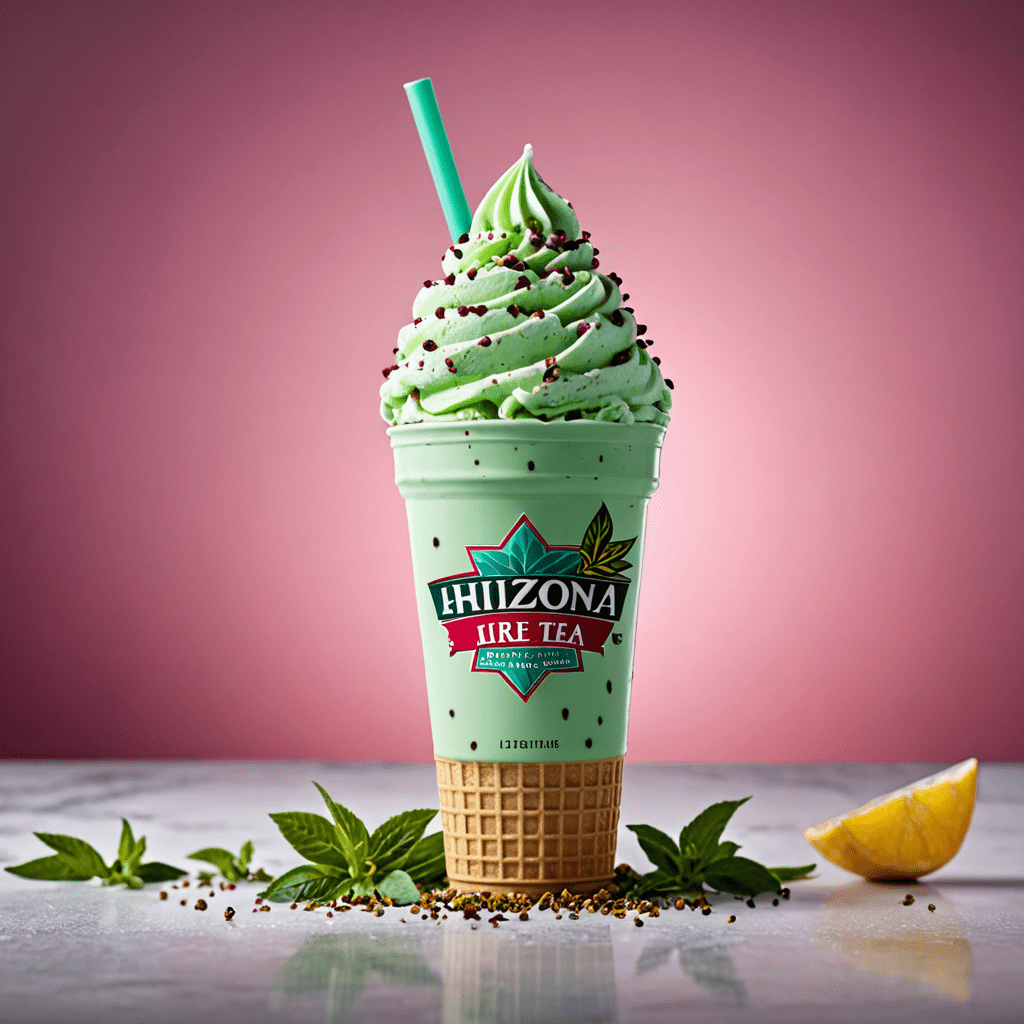
The Intricate Relationship Between Tea and Spices in India
Introduction: A Cultural Tapestry
In India, tea is more than a beverage; it is an integral part of the nation's cultural tapestry. Its history is deeply intertwined with spices, creating a unique and aromatic symphony of flavors that continues to captivate the world. From ancient trade routes to modern culinary creations, the relationship between these two elements has shaped India's culinary landscape and left an indelible mark on its traditions.
This article delves into the intricate connection between tea and spices in India, exploring their historical roots, cultivation practices, and socio-economic impact. We will embark on a flavorful journey, uncovering the secrets of popular spiced teas, their connection to Ayurvedic rituals, and their presence in culinary delights.
Historical Roots: Ancient Connections
India's love affair with spices dates back millennia. As early as 3000 BC, the spice trade flourished, with India serving as a crucial hub in the global network. Spices like cardamom, cloves, and ginger were highly sought after for their culinary and medicinal properties.
The introduction of tea to India in the 17th century further solidified the country's position as a spice haven. The British East India Company, recognizing the potential for blending tea and spices, began experimenting with various combinations. This led to the creation of the now-iconic Masala Chai, a fragrant concoction that has become synonymous with Indian tea culture.
The Spice Route: A Culinary Crossroads
The spice trade routes that crisscrossed India played a pivotal role in shaping the country's culinary identity. Merchants from across the globe brought with them exotic spices, introducing new flavors and aromas to the local palate. These spices found their way not only into food but also into tea, creating a kaleidoscope of flavor combinations.
The Malabar Coast, with its strategic location on the Arabian Sea, emerged as a major spice trading center. This coastal region was renowned for its production of black pepper, cardamom, and ginger, which were then transported to various parts of India and beyond. The spice trade not only enriched India's culinary repertoire but also contributed significantly to its economy.
Cultivating flavors: The Tea gardens of India
The lush tea gardens of India, nestled amidst rolling hills and misty landscapes, are the cradle of some of the world's finest teas. These gardens, scattered across various regions like Assam, Darjeeling, and Nilgiris, are not only renowned for the quality of tea they produce, but also for their close connection to spices.
Many tea estates in India have incorporated spice cultivation into their operations. This allows them to source fresh, high-quality spices, ensuring that their tea blends are infused with the authentic flavors of India. The use of fresh spices also contributes to the sustainability of tea production, as it reduces reliance on imported ingredients.
Aromatic symphony: The perfect Spice Blends
The art of blending tea and spices in India is a testament to the country's culinary ingenuity. Each region has developed its unique spice combinations, reflecting local preferences and traditions
6. Popular Spiced Teas: A Journey of Taste
India boasts a diverse range of spiced teas, each with its unique character and flavor profile. These teas are not merely beverages; they are an embodiment of the country's rich cultural heritage and culinary traditions.
Masala Chai: The most iconic of Indian spiced teas, Masala Chai is a comforting blend of black tea, milk, sugar, and a fragrant symphony of spices like ginger, cardamom, cloves, and black pepper. This aromatic concoction is a staple in Indian households, enjoyed at any time of day.
Adrak Chai: Ginger tea, known as Adrak Chai, is a warming and soothing beverage perfect for cold weather or when feeling under the weather. The pungent and spicy flavor of ginger is balanced by the sweetness of sugar or honey, creating a comforting and revitalizing drink.
Elaichi Chai: Cardamom tea, or Elaichi Chai, is characterized by its sweet, slightly floral aroma and warm, comforting flavor. Cardamom is known for its digestive properties, making this tea a popular choice after meals.
Saffron Chai: This luxurious tea, infused with saffron, is a true indulgence. The delicate floral notes of saffron combined with the richness of milk and sugar create a truly unforgettable experience. Saffron Chai is often reserved for special occasions or as a gesture of hospitality.
Kahwa: Originating from Kashmir, Kahwa is a unique blend of green tea, saffron, almonds, and rose petals. This fragrant and refreshing tea is known for its calming properties and is often enjoyed after meals.
7. Health Rituals: The Ayurvedic Connection
Spiced teas in India are deeply intertwined with Ayurvedic rituals, a traditional system of medicine that emphasizes the balance of mind, body, and spirit. Each spice is believed to possess unique healing properties, making these teas not just flavorful but also beneficial for overall well-being.
Ginger: Known for its anti-inflammatory and digestive properties, ginger is commonly used in teas to relieve nausea, improve circulation, and boost immunity.
Cardamom: With its warming and carminative properties, cardamom aids digestion, reduces gas and bloating, and promotes overall digestive health.
Cloves: Clove's antibacterial and analgesic qualities make it effective in relieving toothaches, sore throats, and coughs.
- Black Pepper: Black pepper aids digestion, stimulates metabolism, and possesses antioxidant properties that contribute to overall health and well-being.
These spiced teas are often consumed as part of daily Ayurvedic rituals, promoting balance and harmony within the body.
8. Beyond the Cup: Culinary Creations
The aromatic allure of spiced teas extends beyond the cup, finding its way into various culinary creations. Indian cuisine boasts a rich tradition of using spiced teas as ingredients in dishes that tantalize the taste buds.
Tea-infused Desserts: Spiced teas like Masala Chai and Elaichi Chai add depth and complexity to puddings, cakes, and other sweet treats. The warm spices complement the sweetness, creating a symphony of flavors that is truly irresistible.
Savory Dishes: Spiced teas can enhance the flavor profile of savory dishes as well. Chicken, fish, and vegetable curries infused with Masala Chai or Adrak Chai acquire a unique depth of flavor and a comforting warmth.
Marinades and Brines: Spiced teas can be used as marinades for meats and poultry, infusing them with subtle spice notes and tenderizing the meat. Additionally, they can be incorporated into brines for vegetables, adding complexity and depth to their flavor.
9. Socio-Economic Impact: A Thriving Industry
The tea and spice industry in India is a significant contributor to the country's economy, providing livelihood to millions of farmers, workers, and entrepreneurs. The cultivation, processing, and distribution of tea and spices generate substantial revenue and employment opportunities across different regions.
Small-scale tea and spice farmers play a crucial role in sustaining this industry. Their traditional farming practices and commitment to quality ensure the continued availability of authentic flavors that define India's culinary legacy.
The thriving export market for Indian tea and spices further contributes to the country's economic prosperity. These aromatic treasures find their way to tea and spice-loving consumers worldwide, spreading the unique flavors of India across the globe.
10. Conclusion: A Legacy of Taste and Tradition
The intricate relationship between tea and spices in India is a testament to the country's rich cultural heritage and culinary ingenuity. From ancient trade routes to modern-day tea gardens, this aromatic journey has shaped a vibrant and diverse tea-drinking culture.
Spiced teas in India are more than just beverages; they are an integral part of daily life, rituals, and celebrations. They embody the warmth, hospitality, and flavorful richness that define India's culinary traditions. As the legacy of taste and tradition continues to be passed down through generations, the love affair between tea and spices in India will undoubtedly endure.
Frequently Asked Questions
Q: What are the most popular spices used in Indian tea?
A: The most popular spices used in Indian tea include ginger, cardamom, cloves, black pepper, cinnamon, and fennel.
Q: What are the health benefits of drinking spiced tea?
A: Spiced teas offer various health benefits depending on the spices used. Ginger aids digestion and reduces inflammation, cardamom improves digestion and relieves gas, cloves have antibacterial and analgesic properties, and black pepper boosts metabolism and has antioxidant properties.
Q: How do I make spiced tea at home?
A: To make spiced tea at home, start by steeping black tea leaves in hot water. Add your desired spices and let them infuse for a few minutes. Strain the tea and add milk, sugar, or honey to taste.
Q: Where can I buy authentic Indian spiced tea?
A: Authentic Indian spiced tea can be found in Indian grocery stores, online retailers specializing in Indian tea, and some specialty tea shops.


